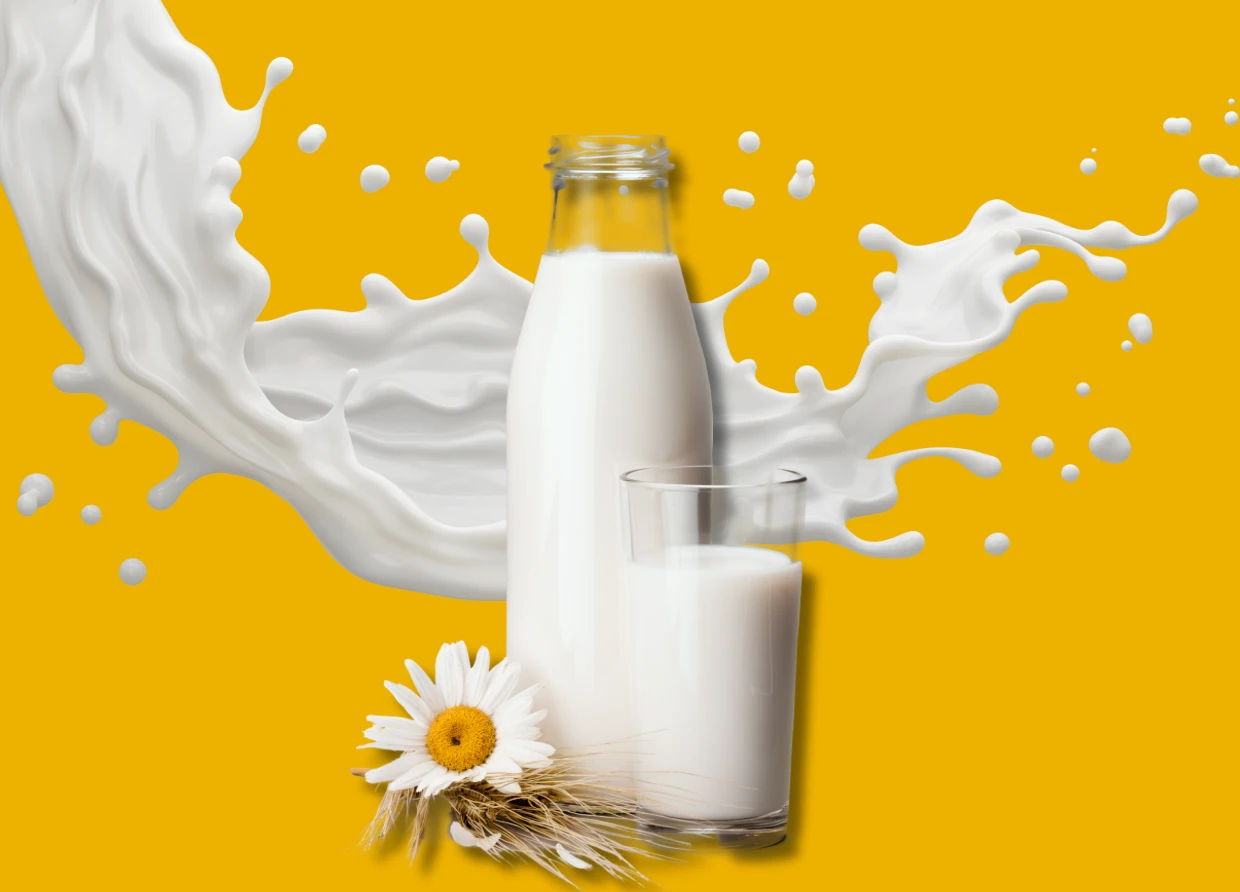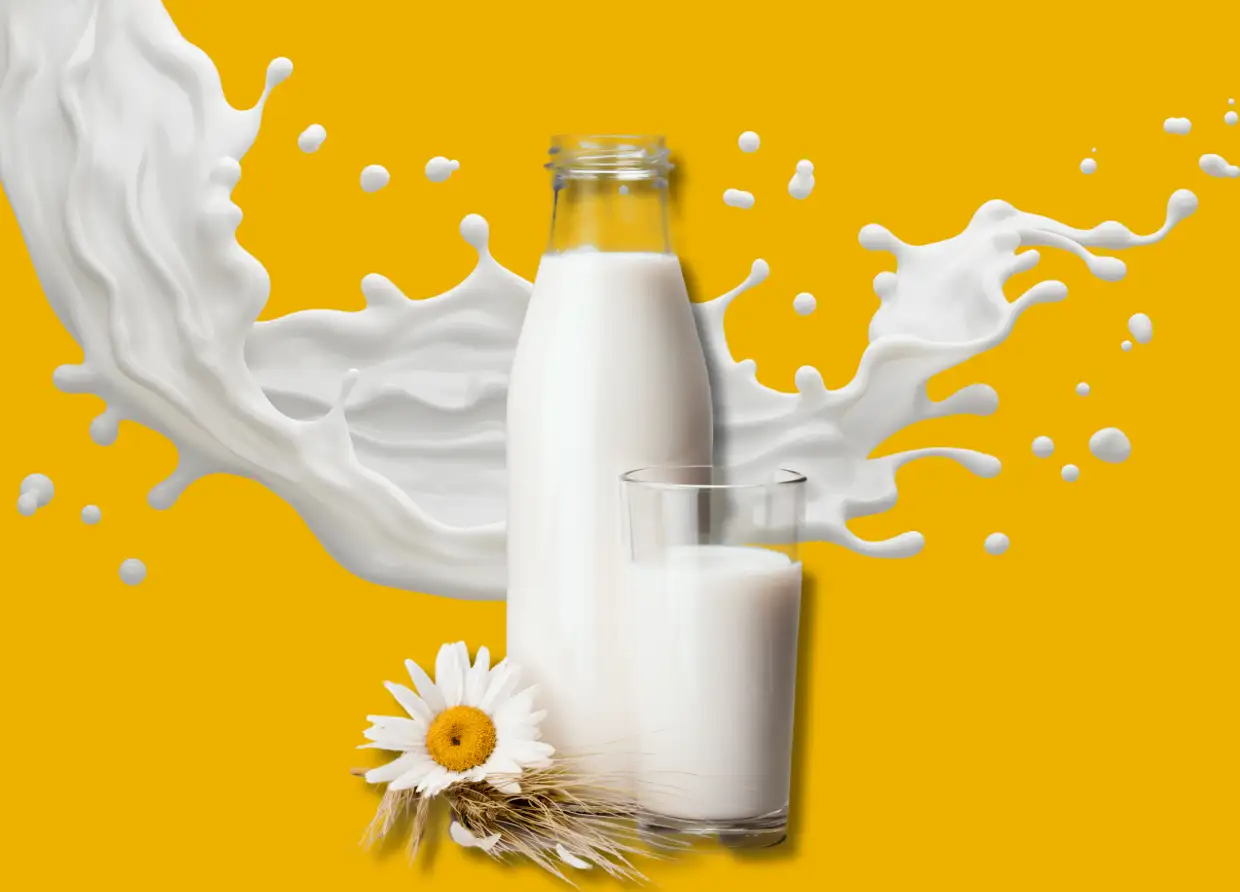WHOLE MILK IS BACK: IS THE CREAMY CLASSIC ACTUALLY HEALTHIER THAN SKIM?
For decades, full-fat dairy was the villain of your fridge. Now experts say it might just be the comeback kid of nutrition—but is it really worth swapping your skim for the “real stuff”?

Whole milk used to have a terrible reputation. Too fatty, too heavy, too “unhealthy.” For years, health authorities told us to stick to skim or low-fat versions if we wanted to avoid weight gain or heart disease. But now? Whole milk is making a surprising comeback—and even experts admit the science is shifting.
A new report released by the Trump administration just added fuel to the fire: schools may soon be allowed to serve whole milk again, lifting restrictions that have been in place for decades. Suddenly, what was once considered “off-limits” might be showing up in kids’ lunch trays—and maybe your fridge too.
So what’s the deal: is whole milk actually healthy, or is this just another nutrition trend?
Why Whole Milk Was “Canceled” in the First Place
Back in 1985, the official Dietary Guidelines for Americans told everyone to ditch full-fat dairy. The logic was simple: whole milk has around 8 grams of fat per cup, including 5 grams of saturated fat, the kind that was blamed for weight gain and heart disease.
For years, “fat-free” ruled grocery store shelves. But now researchers are asking: did we oversimplify?
The Case for Whole Milk’s Comeback
Recent studies are flipping the script. Research suggests that not all saturated fats are equally bad, and whole-fat dairy may not be directly tied to higher heart disease risk. In fact, some evidence shows whole milk could even protect against type 2 diabetes and certain cardiovascular issues.
Nutritionists are also looking at the “whole food matrix” idea: the nutrients, fats, and proteins in whole milk may work together in a way that low-fat versions just can’t replicate. That synergy might boost nutrient absorption and keep you feeling fuller for longer.
A 2024 study even linked whole milk to lower body weight and BMI, while reduced-fat milk left people hungrier and more likely to reach for less healthy snacks.
The Risks You Can’t Ignore
Of course, it’s not all good news. One major review connected whole milk to a higher risk of death from cancer when consumed in excess—about a 12% increase per extra cup per day. And while the science on heart disease is shifting, it isn’t conclusive yet.
There’s also the calorie factor: multiple cups of whole milk can quickly add up. If you’re not balancing those calories elsewhere, you might see weight gain. That’s why the American Heart Association still advises limiting saturated fat to less than 6% of daily calories.
So, What Should You Actually Drink?
Here’s the bottom line: there’s no “one-size-fits-all” answer. Whole milk, reduced-fat, and skim can all be part of a healthy diet—it depends on your personal health goals and lifestyle.
- Want to feel fuller longer and don’t mind the extra calories? Whole milk might be your friend.
- Counting calories or already eating a lot of saturated fat elsewhere? Low-fat could be smarter.
- Just love the taste of one over the other? That matters too.
As dietitian Qianzhi Jiang, PhD, RD, puts it: “Based on the current evidence, it is really hard to say which type of milk is the best. We’ve found both increased and reduced risks associated with whole milk.”
So go ahead—pour yourself a glass of whatever fits your vibe. Just maybe skip the gallon-a-day challenge.
#THE S MEDIA #Media Milenial #whole milk comeback #dairy debate #nutrition trends #healthy eating #saturated fat #full-fat dairy #diet myths #Gen Z health #wellness choices #milk vs skim #nutrition science

























